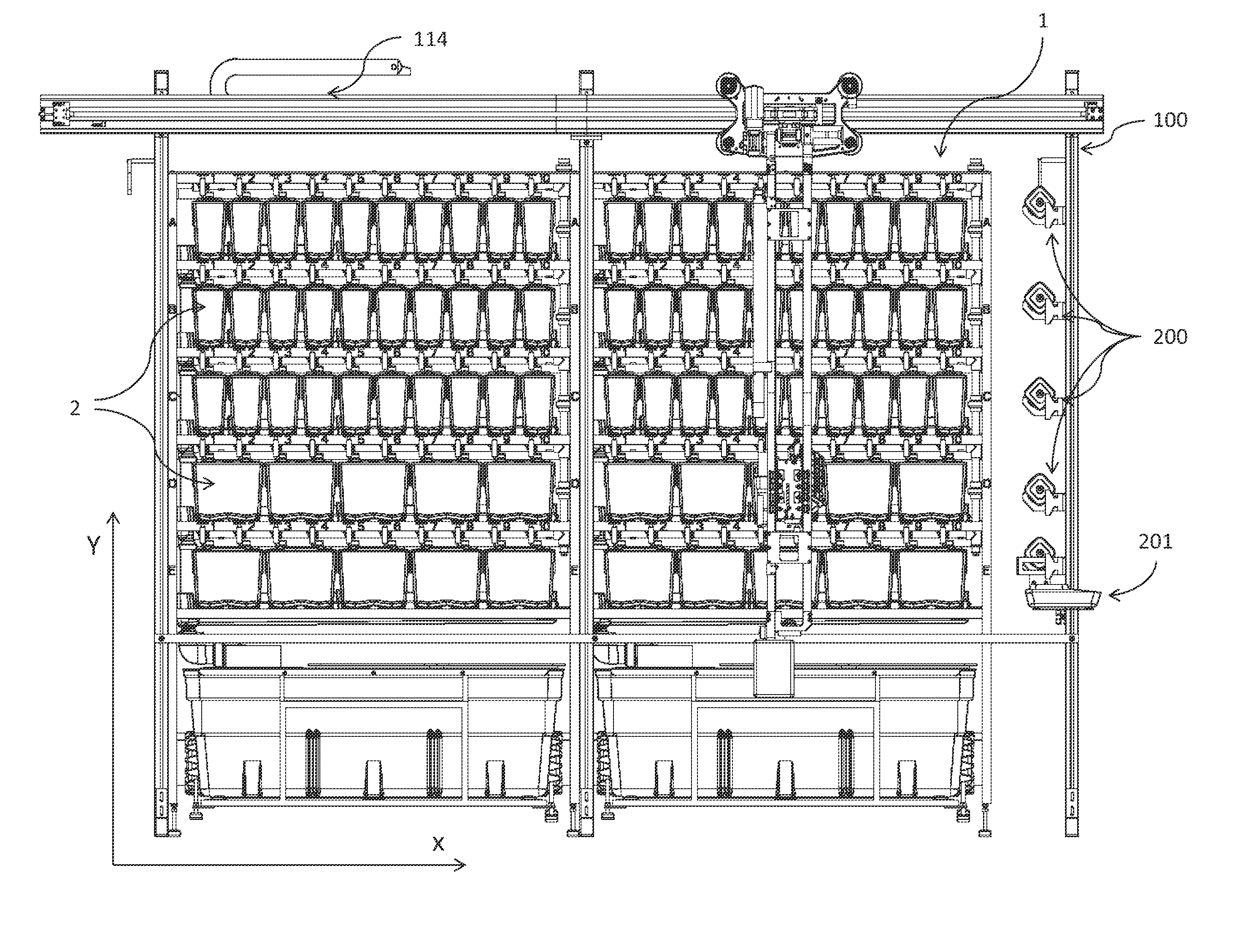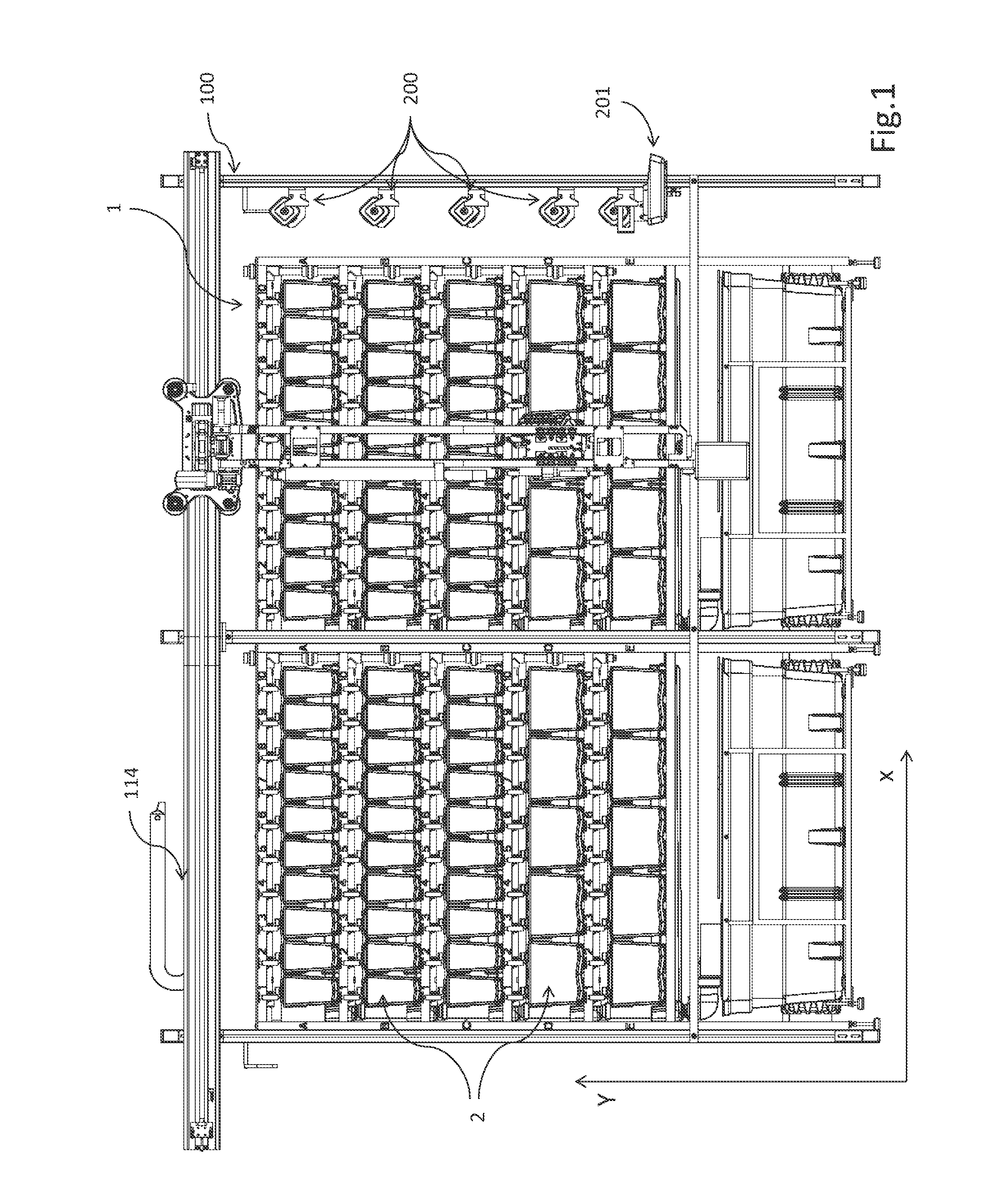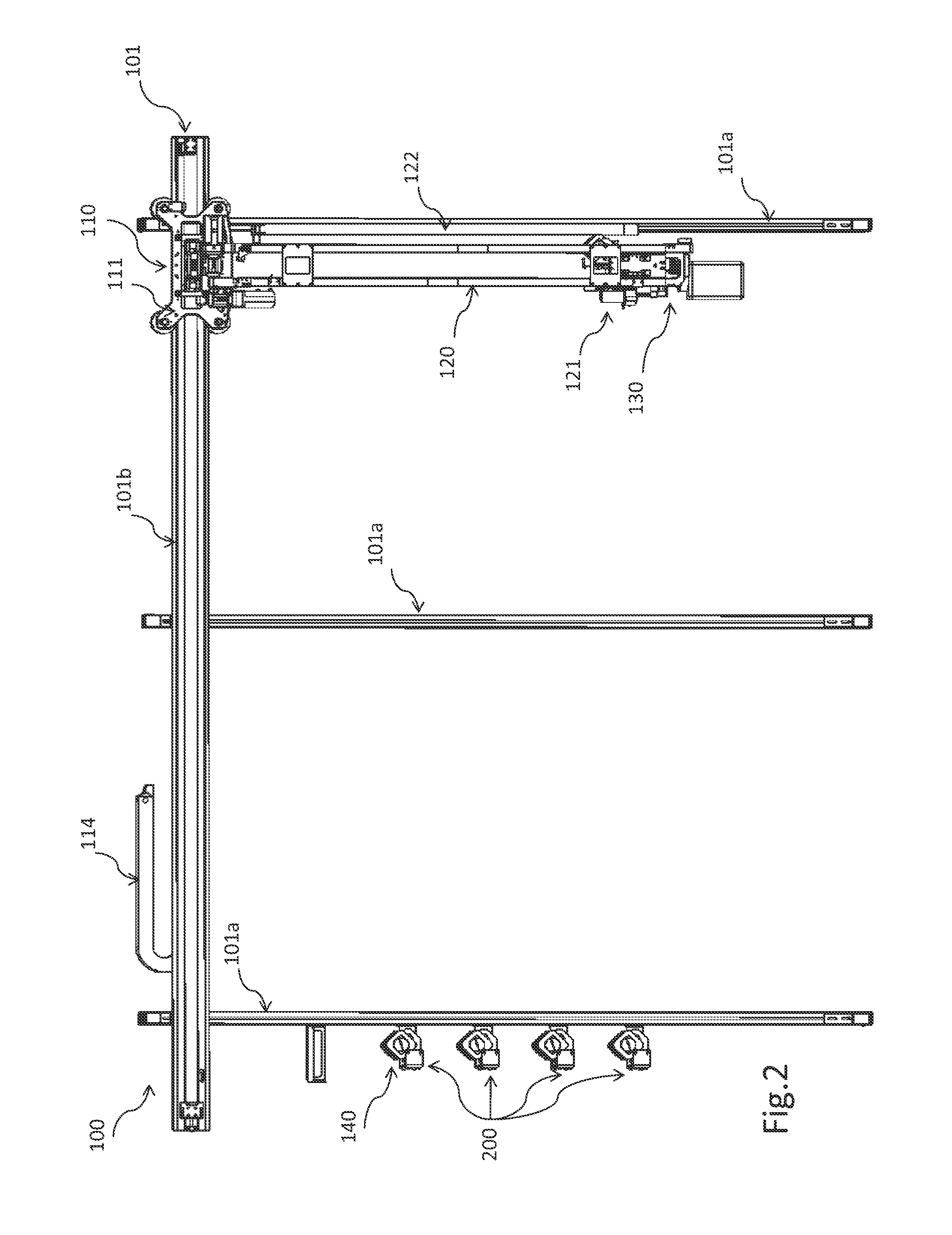Automated system for controlled distribution of substances to animal containment devices in an animal housing facility
a technology of containment device and controlled distribution, which is applied in the direction of animal housing, animal feeding device, climate change adaptation, etc., can solve the problems of water pollution, deterioration of quality, and negative effect on the health of fish
- Summary
- Abstract
- Description
- Claims
- Application Information
AI Technical Summary
Benefits of technology
Problems solved by technology
Method used
Image
Examples
Embodiment Construction
[0040]FIG. 1 shows an example of a typical animal housing facility rack suitable to house a plurality of laboratory animal containment devices (two structures by way of example).
[0041]In describing the preferred embodiment of the present invention, reference will be made to an animal housing facility in which said containment devices are tanks for housing aquatic organisms, or as they are called in more generic terms by researchers, aquatic animal models. In particular, FIGS. 1 to 8 show an embodiment of the system of the present invention suitable to be associated in particular with an animal housing facility for raising fish, preferably zebrafish, although without intending to limit the present invention to the dispensing of food or other substances to tanks for housing aquatic models. The animal containment devices of the animal housing facility can in fact be any, for example cages for guinea pigs, rats or other non-aquatic animals, or tanks for different aquatic animals.
[0042]T...
PUM
 Login to View More
Login to View More Abstract
Description
Claims
Application Information
 Login to View More
Login to View More - R&D
- Intellectual Property
- Life Sciences
- Materials
- Tech Scout
- Unparalleled Data Quality
- Higher Quality Content
- 60% Fewer Hallucinations
Browse by: Latest US Patents, China's latest patents, Technical Efficacy Thesaurus, Application Domain, Technology Topic, Popular Technical Reports.
© 2025 PatSnap. All rights reserved.Legal|Privacy policy|Modern Slavery Act Transparency Statement|Sitemap|About US| Contact US: help@patsnap.com



